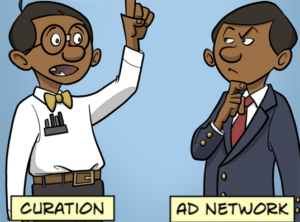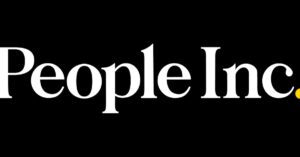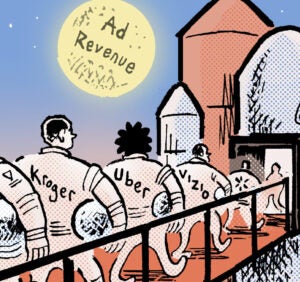 Sandwiched somewhere between the smart cars and $599 headsets at CES, Facebook dropped a mini-bomb by way of its developer blog when it revealed Thursday that LiveRail – the video ad server, SSP and publisher monetization platform it acquired in 2014 – would exit the ad-serving business.
Sandwiched somewhere between the smart cars and $599 headsets at CES, Facebook dropped a mini-bomb by way of its developer blog when it revealed Thursday that LiveRail – the video ad server, SSP and publisher monetization platform it acquired in 2014 – would exit the ad-serving business.
Facebook purports the move will allow it to focus on more lucrative areas of business, including its data-laden Facebook Audience Network (FAN), which clocked $1 billion in ad spend in Q4, the first time Facebook has released these figures.
LiveRail’s ad server pullback will affect fewer than 100 customers, who will be migrated onto “alternative” ad servers or other publisher offerings from Facebook, though it’s not clear yet what that entails.
When Facebook acquired LiveRail in July 2014, a year after purchasing Atlas from Microsoft, some industry spectators viewed it as an attempt to build out a publisher display network.
But of late Atlas has been positioned more as Facebook’s people-based measurement system and ad server for buy-side clients, while its efforts on the supply side focused on forging more direct relationships with publishers.
As such, Facebook’s LiveRail kicked out third-party video resellers last fall in the name of shoring up more premium supply in its marketplace.
“Taking out ad networks made sense in this context, because it avoids any channel conflict [around] ad networks selling against them using their own tech and simplifies anything they might want to do with data,” noted John Nardone, CEO of the ad server Flashtalking and former CEO of [x+1]. “It sounds like they are formalizing that split – Atlas, buy side. LiveRail, publisher side.”
But why is Facebook’s LiveRail dropping its ad server when its private marketplace business appears healthy? The platform powers private exchanges for about 75 publishers and broadcasters globally, including Hulu, Dailymotion and A+E Networks.
For one, the ad-serving space is crowded and some say it’s already commoditized.
“The future of digital advertising is programmatic via PMPs/Deal IDs, not ad serving, [so] … it makes sense that Facebook would take this step,” noted Craig Berlingo, VP of product and publisher platforms for Tremor Video. “This is a huge shift for LiveRail, who was an ad server at its core, but not necessarily for Facebook who has had its eye on programmatic for some time now.”
Private marketplace partners, including A+E, already use platforms like Comcast’s FreeWheel as its ad server. Conversely, DoubleClick and Sizmek (MediaMind) are pretty well entrenched in digital ad-serving, while connected TV operators like Roku layer in interactive ads through partners such as Innovid, which focuses on video ad-serving for brands and agencies, or BrightLine.
And the signs already pointed toward LiveRail’s remake. At its developer conference F8 last spring, Facebook paraded its new mobile network, which translated age and gender targets common in video and TV planning – the hallmark of LiveRail – into in-app and native ad formats.
A few months later, in August, Facebook rolled out more formats for FAN, including video, dynamic product ads and carousel ads.
“Video tends to drive a higher performance for a publisher,” a Facebook product manager told AdExchanger at the time. “We anticipate over time that video will be a growing share of the Audience Network.”
With Facebook seemingly shifting its focus to FAN, and applying its own data to third-party publishers and apps, upgrading a video ad server rooted in desktop to meet newer technical requirements just might not have been the big priority.














